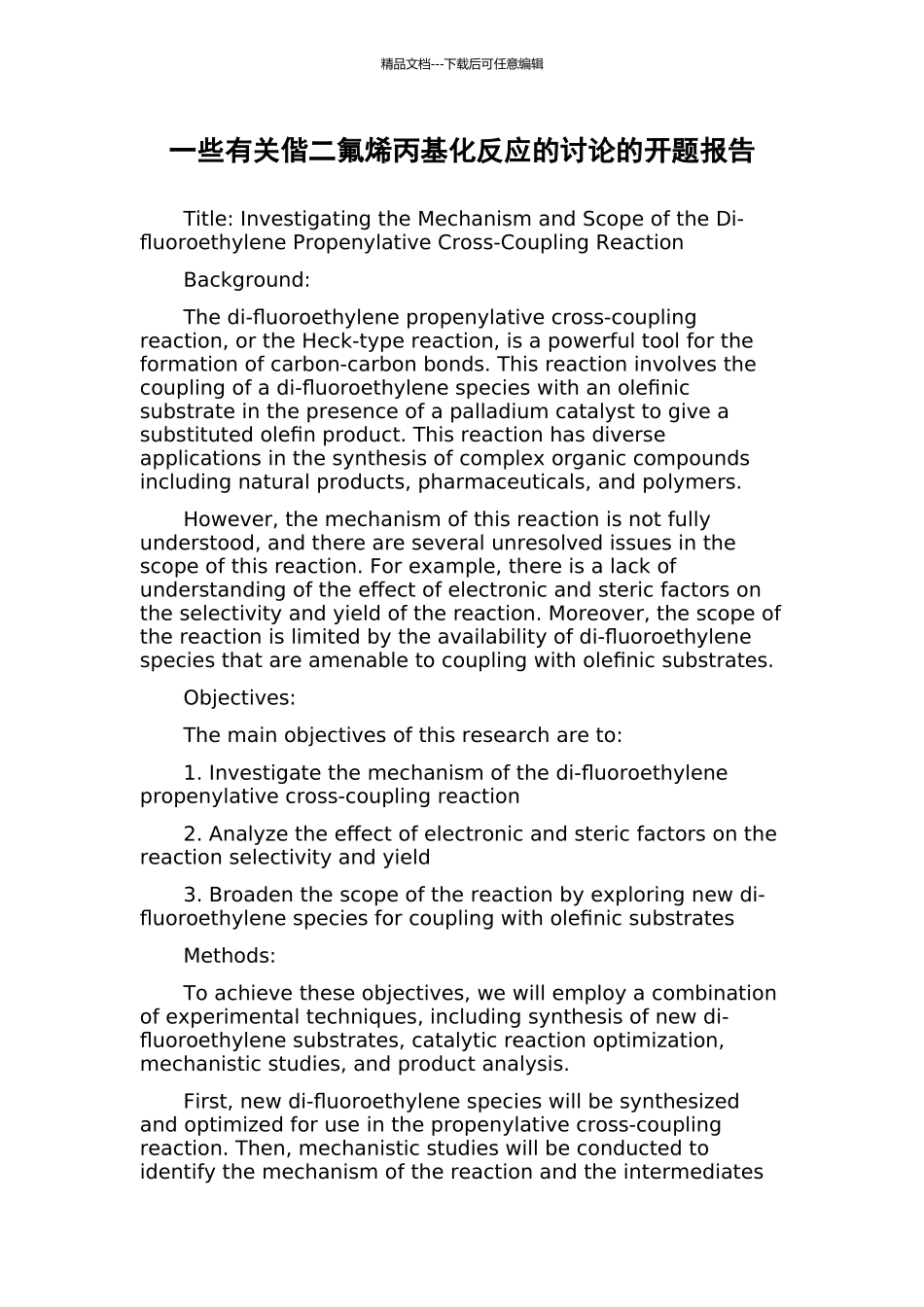精品文档---下载后可任意编辑一些有关偕二氟烯丙基化反应的讨论的开题报告Title: Investigating the Mechanism and Scope of the Di-fluoroethylene Propenylative Cross-Coupling ReactionBackground:The di-fluoroethylene propenylative cross-coupling reaction, or the Heck-type reaction, is a powerful tool for the formation of carbon-carbon bonds. This reaction involves the coupling of a di-fluoroethylene species with an olefinic substrate in the presence of a palladium catalyst to give a substituted olefin product. This reaction has diverse applications in the synthesis of complex organic compounds including natural products, pharmaceuticals, and polymers.However, the mechanism of this reaction is not fully understood, and there are several unresolved issues in the scope of this reaction. For example, there is a lack of understanding of the effect of electronic and steric factors on the selectivity and yield of the reaction. Moreover, the scope of the reaction is limited by the availability of di-fluoroethylene species that are amenable to coupling with olefinic substrates.Objectives:The main objectives of this research are to:1. Investigate the mechanism of the di-fluoroethylene propenylative cross-coupling reaction2. Analyze the effect of electronic and steric factors on the reaction selectivity and yield3. Broaden the scope of the reaction by exploring new di-fluoroethylene species for coupling with olefinic substratesMethods:To achieve these objectives, we will employ a combination of experimental techniques, including synthesis of new di-fluoroethylene substrates, catalytic reaction optimization, mechanistic studies, and product analysis.First, new di-fluoroethylene species will be synthesized and optimized for use in the propenylative cross-coupling reaction. Then, mechanistic studies will be conducted to identify the mechanism of the reaction and the intermediates 精品文档---下载后可任意编辑involved. The effect of electronic and steric factors on reaction selectivity and yield will be analyzed through controlled experiments.Finally, the scope of the reaction will be expanded by exploring new di-fluoroethylene substrates that are compatible with different olefinic substrates. We will analyze the resulting products using a combination of spectroscopic and chromatographic techniques to identify the structure and purity of the products.Expected Outcomes:This study is expected to provide new insights into the mechanism of the di-fluoroethylene propenylative cross-coupling reaction and potentially identify new factors that affect reaction selectivity and yield. The study also aims to broaden the scope of this reaction by exploring new di-fluoroethylene species for coupling with olefinic substrates, which has the potential for application in organic synthesis.

